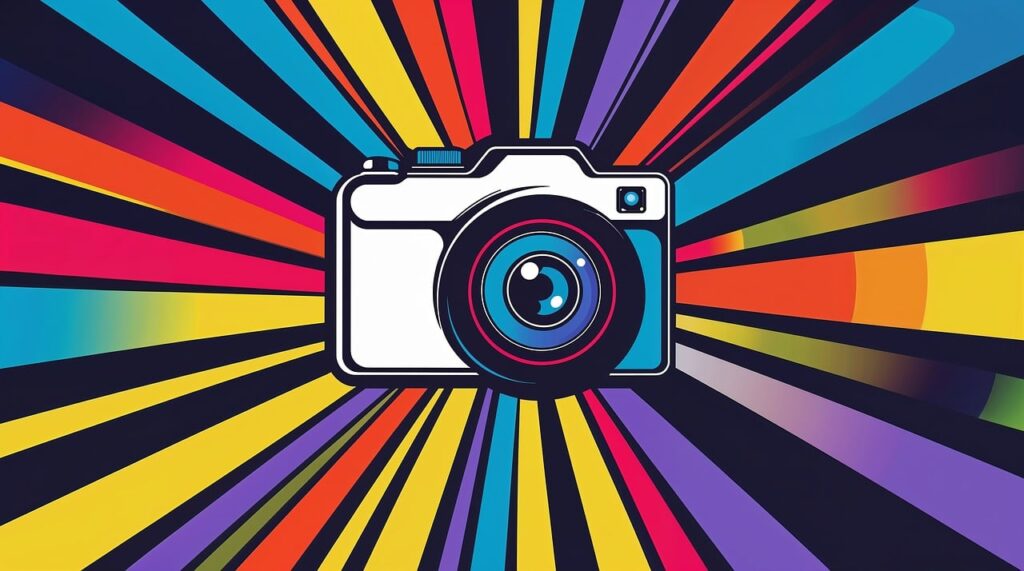AI 101 A Crash Course of Artificial Intelligence Software
Did I use the ChatGPT to write my AI Crash Course Article? I used it to help write the article as I do most of the time these days, but AI did not write the article. There have been AI like writing tools around for a long time, especially in the world of Search Engine Optimization. As early as about 2004 a program called “SEO GOLD” could generate SEO optimized content and fully coded html from key words and prompts. In the early days it was terrible. These tools saw some improvements over the past 20 years, but did not produce quality content until about 2022.
The world of AI has exploded at an insanely fast pace in other industries over the past few years. While Chat GPT and the content creation system have grabbed the lion’s share of the attention, the revolution in other areas of AI will probably have a far greater impact in the years and decades to come.
There are about 300ish popular tools in the wild when I started to write this article, and that number will continue to grow quickly. But the time I published this article, who knows how many are out there now.
The AI space has at least 20 mature or emerging categories of software with more in the pipeline. Like the number of AI tools available, the industries and AI software will also continue to grow at an exponential rate, as long as the zombie apocalypse doesn’t happen.
Consumer Tools and early Industries adoption AI
Writing
Coding
Meetings
Image Design
Video
Customer Support and Sales
HR and Recruiting
Semiconductor Design
Industrial Automation
Drug Development
Writing Blog Articles & Content with AI
Chat GBT can produce some interesting and creative copy. It is still somewhat obvious that the content is AI generated. It can also provide bad information, what is known as a hallucination. I don’t think I have ever taken a blog article directly from a Chat GBT prompt and published it copy and paste. Most of the time I use about a third of the content at most, and also use the AI software to proofread and polish up my writings.
One of my favorite AI assisted articles was on my Austin Fun blog about the Opera. AI failed to give a decent overview of the Austin Opera, but I needed to flush out the article and make in about 1000 words for SEO reasons, so I had Chat GPT write a section of funny fictitious Texas’ Operas, and clearly stated in the articles this was fantasy content created by AI.
OpenAI is now available for free, without even creating an account. The improved version of their software is $20 a month. Learning how to use the software is pretty simple, and the more you use it the better you get at giving the prompts.
There are other programs that are designed for specific purposes and writing help such as Jasper. There are also now systems that have been embedded into other development platforms to create text. For example, most WordPress page builder systems and SEO tools like Divi and YOAST have a button to fill a page, meta tag, or other content bucket with AI generated content from with the WordPress backend, no need to jump on a different browser window and give Chatgbt a prompt, then copy/paste the text back into WordPress.
I have been comparing the content from Microsoft Co Pilot, And Musk’s Gronk on a few recent projects. I had all of them help write jokes for a silly website, and OpenAI was clearly better at it. Apple also has some tools embedded in their OS now, including a free image creation too. So far, I think they are all playing catch-up to ChatGPT.
AI Coding Help
About two years ago, a fellow developer told me I really needed to go check out Chat GPT’s for assistance writing code. I was skeptical. I stopped using books and references manually to look up code snippets a long time ago. Whenever I would get stuck on a coding issue or forgot some syntax I would just Google it. Google for the most part would show the results from one website; Stackoverflow. Stackoverflow is primarily a message board for developers to ask questions, and has an explanation of almost any coding task in any language.
It could take a little white to “Google things’ ‘ and sift through the results to find the correct answer. For a typical task, it took me on average about 30 min. Sometimes just a few minutes, Sometimes up to an hour. Sometimes there was no answer to be found and it was the old school way of just figuring it out.
ChatGPT is now a superior tool to Stackoverflow. It frequently has the correct answer to specific questions. You can give it code snippets and ask what is wrong. It’s also pretty good at writing specific functions. Like many things AI, you need to be an expert in your particular field to effectively use the tools. It’s main value to me is that it saves time. What would take me an hour or so to figure out, now frequently takes 5 minutes. It’s not perfect on the coding side either, it can give you bad information or nothing useful, and it can’t build out entire applications.
ChatGPT prompt is just the kiddy pool tool of AI coding augmentation. GitHub Copilot and other platforms can use adaptive code analyzers to watch how you code over time and find suggestions to streamline and eliminate unnecessary and bloated code. The learning curve, even for senior full stack developers, looks a little steep.
Website Ads with AI
Google has had automated campaigns around for a while, but they also have been terrible until very recently. We just implemented a shopping campaign that pulled in 30,000+ products from Shopify, and Google decided how and what products to showcase. Our ROI on the project has been outstanding. More of our Google ads are now being powered by AI. On the facebook side of things, our AI ads have not done that well. We turned them off and went back to our old school tricks for now.
Building Ad creative with AI
There are a handful of paid tools available. For those looking for an AI tool to make the ads creative\copy\imagery from https://www.adcreative.ai/ is a great place to start. Canva is a popular tool as well.

AI Websites Creation
There are dozens of startups now that will have AI build you an entire website with just a few prompls, and most of them are pretty good. We don’t use them because they are hard to update and tweak and after they are built, the website can only be hosted on the SASS platform that built the website, and they charge $20-$50 a month for the hosting. While this is a non issue for a small business that DIY’s 1 domain. We have hundreds of websites we run on on a handful of servers. So our hosting cost per domain can get as low as $1 per month per site. Some of the bulk hosting providers have AI tools and templates for WordPress. The few I’v seen so far have been junk. I recently built a small one page html and css landing page website with ChatGPT, and it wasn’t too bad.
Graphic Art AI Design Tools
The paid version of Chat GPT will give you some pretty nice logos and graphics with just a few prompts. It frequently has minor issues with fonts. One letter can be off. ChatGPT isn’t very good at correcting its mistakes in the graphics either. It also only gives you a low def version that you can’t edit. Some major limitations. The latest version of Photoshop gets around all of these issues and has AI integrated into the platform. I have just started looking at it, as I find learning new graphics art programs painful. I would install Virtualbox on my Mac just so I could run Windows 10, just so I could run an ancient version of PhotoShop for another 10 years if it wasn’t for the power of AI.
https://openart.ai/ Connects to OpenAI API
Firefly from Adobe Free for 25 credits a month, good for text, fancy fonts, and logos.
Other good online platforms to try for free
- Midjourney is my favorite, though the free trial is temporarily paused, and using it through Discord is weird.
- Stable Diffusion is used in lots of different apps. The simplest way to access it is through its own app, DreamStudio.
- Firefly’s text effects are awesome, as is its integration with other Adobe tools.
- NightCafe and OpenArt are the best apps if you want to play around with different models, including some of the older GAN models.
- Deep Dream Generator is a great way to see how far art generators have come.
- Artbreeder is perhaps the weirdest art generator among a very weird series of art generators—and totally worth a look.
Meeting Recaps
In just about any agency or corporate business it’s somebody’s job, sometimes a full-time job, to take notes of the ridiculously number of meetings that make it on the schedule. We try really hard to not have pointless meetings, and there is no way we’re going to take a long set of notes about them. Word on the Internet is that AI is pretty good at watching a Zoom meeting and giving a recap of the meeting. I’m hoping to give this a shot with some of my kids’ school booster club meetings soon.
Customer Support and Sales
I’m sure somebody actually talks to automated sales calls from AI. I loathe them so much it’s hard for me to see a point that we try to use them to generate leads. They are so obviously an AI bot when I get them. They are much better than they were a few years ago. Same with chat support bots. At least the chat support bots sometimes give you a link to a help article that solves your issue, but they still stink as well.
Drug Development
This is one of the scariest topics in the AI world in my opinion, and also one of the more promising. AI can now be used to try millions of different combinations of proteins when trying to build new medicine. The problem is with one very simple switch you can tell your computer to build a drug that is harmful instead of helpful, and it’s just a whole lot easier for the bad guys to build very bad things. There is a very good Netflix documentary about thi, worth a watch.
AI in the Military
Should we be worried that Arnold Swatchgae like robots are going to take over the world and do away with us? Maybe a little, but that isn’t the immediate AI treat or application. The best of the best in the Air Force have been put against AI controlled jets in fighter simulations and they now get smoked all of the time. AI is used for target acquisition, and officially a human is still supposed to pull the trigger. AI drones and fighters are already superior to human controlled aircraft. The robots or tank-like things are coming soon. It would be great if the world power governments would agree to stop all of it, but that’s probably not going to happen any time soon. The real worry should be AI swarms of little drones, and yes there is a Netflix documentary about those as well.
What is the difference between AI and Deep Learning?
AI (Artificial Intelligence) is a broad field that encompasses various techniques and approaches to simulate human intelligence in machines. It’s the overarching concept of creating machines or systems that can perform tasks that typically require human intelligence, such as problem-solving, learning, understanding natural language, and making decisions.
Deep Learning, on the other hand, is a subset of AI and a specific approach to implementing machine learning. It involves training artificial neural networks with a vast amount of data to learn and make decisions or predictions without explicit programming. Deep Learning focuses on algorithms known as neural networks, which are composed of multiple layers of interconnected nodes (neurons). These networks can automatically discover patterns and features within the data, enabling the system to perform tasks like image recognition, natural language processing, and more.
In essence, Deep Learning is a technique used within the broader field of AI. AI encompasses a wider range of technologies and methods beyond just Deep Learning, including symbolic reasoning, expert systems, evolutionary algorithms, and more traditional machine learning approaches.
How is software built on top of the major AI providers?
Software built on top of major AI providers like OpenAI, Google, or AWS typically uses their APIs to access models for tasks like text generation, image recognition, or speech processing. Developers integrate these APIs into their applications via SDKs or HTTP requests. The software often wraps the AI output with custom logic, user interfaces, and workflows tailored to a specific use case (e.g., customer support, writing tools, code assistants). Data from users is sometimes sent to the AI provider for processing, then the response is used to drive app behavior. Authentication (like API keys) controls access to the AI services. Developers often cache or refine responses for performance and accuracy. Some apps layer additional models (like rerankers or filters) to improve results. Costs scale with usage, so optimization is key. Platforms like LangChain or Semantic Kernel help manage multi-step AI interactions. Most products are cloud-based but some also run lightweight inference locally.
Who Invented AI?
Alan Turning is considered the first major contributor to AI and Geoffery Hinton, also known as “The Godfather of AI” is credited for building AI into what we know of it today. Here are a few articles on the history of AI
Who are the major companies building AI software?
- ChatGPT
- Microsoft
- Nvidia
- Elon Musk
- IBM
- A lot of other companies big and small
Cool AI Tools
https://www.photoroom.com/tools/background-remover
https://influencity.com/

